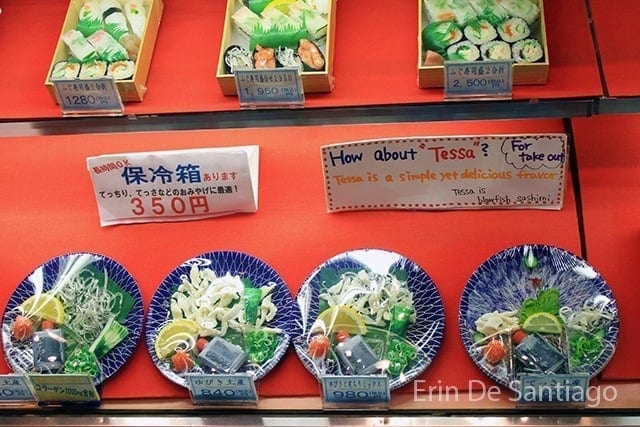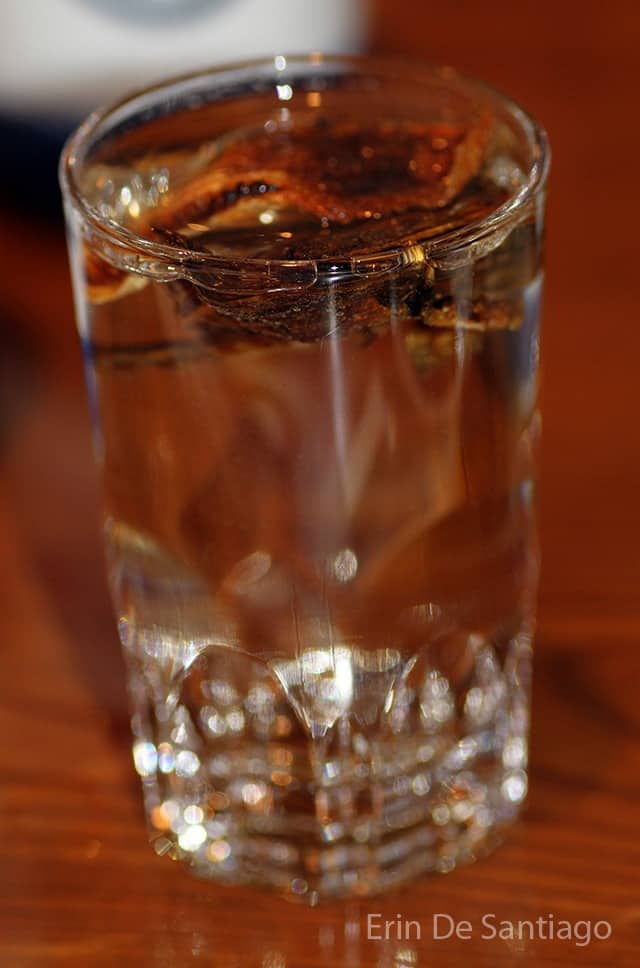When I think back to traveling Japan for the first time, the food is one of the things that most stands out in my mind. I was excited to try fresh sushi and sashimi, ramen, soba, and udon noodles, yakitori and deep-fried meat on a stick.
What wasn’t on my radar was fugu, or pufferfish, one of the deadliest foods in the world.
It wasn’t until probably my 5th or so trip to Japan that my husband decided he wanted to try fugu.
“You what?”
We were traveling in the southern part of Japan that trip and had come back up to Osaka to finish off his birthday week.
“Yeah, let’s try fugu in Osaka.”
Mind you, this is the man who barely learned how to eat sushi a few years ago and now wants to advance to “Culinary Russian Roulette”!
My initial instinct was panic and fear and figuring this must be his version of a mid-life crisis. Some men want to buy a new sports car, mine wants to eat poisonous fish.

I spent hours, literally hours, researching fugu stats, reputable restaurants, the risk factors, etc. If I was going to take this big of a risk, I wanted to know what I was getting myself into.
Surprisingly, after Googling everything I could get my hands on, the risks were not as bad as I thought. Here are some helpful facts and tips if you plan to try fugu on your trip to Japan.

For those unfamiliar with fugu, the toxicity of the fish comes from tetrodotoxin, a neurotoxin that is located in the fish’s organs, especially its ovaries, liver, and even in its skin. One wrong cut and the entire fish is contaminated. The poison causes paralysis and people eventually die from asphyxiation.
Research is actually underway in Japan on learning to farm fugu that is non-poisonous. By restricting the fish’s diet and its environment, they believe they can eliminate the tetrodotoxin. Their research has shown the fish’s diet and digestive process are the reason behind the production of this neurotoxin, but skeptics think they are using different types of fish.
Contents
Fugu Death Toll Relatively Low
Statistics show that most of the fugu related deaths come from people eating at unlicensed establishments and fishermen in some countries who catch and attempt to clean it themselves.
On average, less than 70 people are hospitalized each year for fugu poisoning, with a fatality rate of less than 10%. While there is no antidote, medical advances have come a long way in helping decrease the fatality rate from accidental fugu poisoning.
Fugu Chefs Undergo Rigorous Training
It might make you feel slightly better to learn that obtaining a license to sell fugu is no small feat. Chefs undergo multi-year apprenticeships learning the proper way to cut and prepare fugu. If you think that is tough, imagine the licensing examination – with a pass rate of less than 40%! The licensing process involved a written exam, fish identification test, and the best part – a practical test where applicants have to prepare and consume the fugu.
Stick to Licensed and Reputable Fugu Restaurants
While this may seem like common sense, some people do not take the time to find what restaurants specialize in fugu, or more importantly, are licensed to serve fugu.
We were in a small sushi bar during this trip and saw what appeared to be a pufferfish in the cold case, ready to be cut up. Expressing curiosity, we asked the chef if that was fugu. He quickly said “no, no” and proceeded to go take the fish in the back. My guess is he was obviously not licensed to serve it and didn’t want anyone finding out he had it.
One popular chain specializing in fugu is Zuboraya, which has two locations in Osaka. The most notable is the one in Dotonbori, Osaka’s trendy night area. This is where we tried pufferfish and obviously, we survived!

How Fugu is Prepared
Many of the restaurants like Zuboraya specialize in fugu menus. You can choose how many courses, with each course highlighting a different part of the fish or a new cooking method. Fugu is definitely not inexpensive and a full tasting menu can easily exceed $100 US.
A better option if you want to just sample fugu is to try a sashimi platter, one of the signature ways fugu is prepared. Often called fugu sashi or tessa, the fugu is sliced so thinly, it’s literally transparent. Most times it is arranged in a chrysanthemum pattern and placed on an intricately designed plate so the pattern shows through.

If you are sake drinker, don’t miss out on the hirazake. It’s a baked fugu fin served in hot sake. The taste is harsh, and you can’t eat the fin, but it’s an experience.

Eating Fugu Outside of Japan
You can try fugu in the United States but check carefully as there are only a handful of restaurants nationwide that are licensed to serve it. Chefs are trained under the same rigorous conditions as Japanese chefs, yet they don’t even really handle the fish per se. The fish is rid of all its toxins in Japan then freeze-flown to the US under careful watch.
